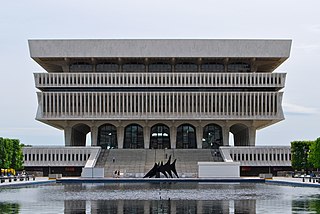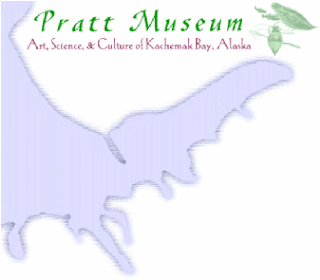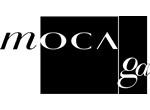
The Smithsonian Institution, or simply the Smithsonian, is a group of museums, education and research centers, created by the U.S. government "for the increase and diffusion of knowledge." Founded on August 10, 1846, it operates as a trust instrumentality and is not formally a part of any of the three branches of the federal government. The institution is named after its founding donor, British scientist James Smithson. It was originally organized as the United States National Museum, but that name ceased to exist administratively in 1967.

The National Gallery of Art is an art museum in Washington, D.C., United States, located on the National Mall, between 3rd and 9th Streets, at Constitution Avenue NW. Open to the public and free of charge, the museum was privately established in 1937 for the American people by a joint resolution of the United States Congress. Andrew W. Mellon donated a substantial art collection and funds for construction. The core collection includes major works of art donated by Paul Mellon, Ailsa Mellon Bruce, Lessing J. Rosenwald, Samuel Henry Kress, Rush Harrison Kress, Peter Arrell Browne Widener, Joseph E. Widener, and Chester Dale. The Gallery's collection of paintings, drawings, prints, photographs, sculpture, medals, and decorative arts traces the development of Western art from the Middle Ages to the present, including the only painting by Leonardo da Vinci in the Americas and the largest mobile created by Alexander Calder.

The Field Museum of Natural History (FMNH), also known as The Field Museum, is a natural history museum in Chicago, Illinois, and is one of the largest such museums in the world. The museum is popular for the size and quality of its educational and scientific programs, and its extensive scientific specimen and artifact collections. The permanent exhibitions, which attract up to 2 million visitors annually, include fossils, current cultures from around the world, and interactive programming demonstrating today's urgent conservation needs. The museum is named in honor of its first major benefactor, Marshall Field, the department-store magnate. The museum and its collections originated from the 1893 World's Columbian Exposition and the artifacts displayed at the fair.

The National Museum of Natural History (NMNH) is a natural history museum administered by the Smithsonian Institution, located on the National Mall in Washington, D.C., United States. It has free admission and is open 364 days a year. With 4.4 million visitors in 2023, it was the third most-visited museum in the United States.

Museology is the study of museums. It explores the history of museums and their role in society, as well as the activities they engage in, including curating, preservation, public programming, and education.

The Smithsonian American Art Museum is a museum in Washington, D.C., part of the Smithsonian Institution. Together with its branch museum, the Renwick Gallery, SAAM holds one of the world's largest and most inclusive collections of art, from the colonial period to the present, made in the United States. More than 7,000 artists are represented in the museum's collection. Most exhibitions are held in the museum's main building, the Old Patent Office Building, while craft-focused exhibitions are shown in the Renwick Gallery.

The National Museum of African Art is the Smithsonian Institution's African art museum, located on the National Mall of the United States capital. Its collections include 9,000 works of traditional and contemporary African art from both Sub-Saharan and North Africa, 300,000 photographs, and 50,000 library volumes. It was the first institution dedicated to African art in the United States and remains the largest collection. The Washington Post called the museum a mainstay in the international art world and the main venue for contemporary African art in the United States.

The California African American Museum (CAAM) is a museum located in Exposition Park, Los Angeles, next to the California Science Center. The museum focuses on enrichment and education on the cultural heritage and history of African Americans with a focus on California and western United States.

The New York State Museum is a research-backed institution in Albany, New York, United States. It is located on Madison Avenue, attached to the south side of the Empire State Plaza, facing onto the plaza and towards the New York State Capitol. The museum houses art, artifacts, and ecofacts that reflect New York’s cultural, natural, and geological development. Operated by the New York State Education Department's Office of Cultural Education, it is the oldest and largest state museum in the US. Formerly located in the State Education Building, the museum now occupies the first four floors of the Cultural Education Center, a ten-story, 1,500,000-square-foot (140,000 m2) building that also houses the New York State Archives and New York State Library.
Alvin Eli Amason is a Sugpiaq Alaskan painter and sculptor. He was raised in Kodiak and is of Alutiiq ancestry. He received his Master of Fine Arts from Arizona State University and taught for several years at Navajo Community College. For seventeen years, he taught at the University of Alaska Fairbanks and was the head of the Alaska Native Art studies program there. After retiring, he was asked to join the Department of Art at the University of Alaska, Anchorage and develop an Alaska Native Art curriculum.

The Grace Museum is located in Abilene, Texas, United States. The museum is accredited by the American Alliance of Museums (AAM). The Grace Museum houses five art galleries featuring rotating art exhibitions and artwork from the permanent collection; a history gallery with permanent and rotating exhibits featuring Abilene, Taylor County, and West Texas artifacts; an art library; an education center and an interactive gallery for children and families. The Abilene Fine Arts Museum was founded in 1937 by the Art League of the Abilene Woman's Club. The art museum was housed in various downtown locations and Rose Park before the current facility was renovated in 1992. Since 1992, the museum has existed as The Museums of Abilene, Grace Cultural Center and the name was officially changed to The Grace Museum in 1998.

HistoryMiami Museum, formerly known as the Historical Museum of Southern Florida, is a museum located in Downtown Miami, Florida, United States. HistoryMiami Museum is the largest history museum in the State of Florida. HistoryMiami houses four permanent galleries and up to three traveling exhibits, Archives and Research Center, the South Florida Folklife Center, the Education Center, and City Tours program.

The Dennos Museum Center is a fine art museum and cultural center located in Traverse City, Michigan on the campus of Northwestern Michigan College (NMC). Most notable for its permanent collection of Inuit art, the Dennos Museum opened in 1991 and features rotating exhibitions of Modern and Contemporary art.

The Pratt Museum is a regional natural history museum located in Homer, Alaska, with exhibits exploring life around Kachemak Bay in South Central Alaska. The museum's mission is to preserve "the stories of the Kachemak Bay region", through "collections, exhibits, and programs in culture, science, and art". Indoor exhibits include early homesteading, Native Alaskan traditions, local contemporary art, and an exploration of the marine and terrestrial life around Kachemak Bay. Outdoor exhibits feature a historic cabin, botanical gardens and a nature trail.

The Museum of Contemporary Art of Georgia is a contemporary art museum in Atlanta, Georgia that collects and archives contemporary works by Georgia artists.

William Wyvill Fitzhugh IV is an American archaeologist and anthropologist who directs the Smithsonian's Arctic Studies Center and is a Senior Scientist at the National Museum of Natural History. He has conducted archaeological research throughout the circumpolar region investigating cultural responses to climate and environmental change and European contact. He has published numerous books and more than 150 journal articles, and has produced large international exhibitions and popular films. Of particular note are the many exhibition catalogues he has had edited, which make syntheses of scholarly research on these subjects available to visitors to public exhibitions.

Smithsonian Affiliations is a division of the Smithsonian Institution that establishes long-term partnerships with non-Smithsonian museums and educational and cultural organizations in order to share collections, exhibitions and educational strategies and conduct joint research. Partner organizations are known as "Smithsonian Affiliates".
The Yupiit Piciryarait Cultural Center (YPCC), also known as Yupiit Piciryarait Cultural Center and Museum, formerly known as the Yup'ik Museum, Library, and Multipurpose Cultural Center, is a non-profit cultural center of the Yup'ik culture centrally located in Bethel, Alaska near the University of Alaska Fairbanks' Kuskokwim Campus and city offices. The center is a unique facility that combines a museum, a library, and multi-purpose cultural activity center including performing arts space, for cultural gatherings, feasts, celebrations, meetings and classes. and that celebrates the Yup'ik culture and serves as a regional cultural center for Southwest Alaska. The name of Yupiit Piciryarait means "Yup'iks' customs" in Yup'ik language and derived from piciryaraq meaning "manner; custom; habit; tradition; way of life" Construction of this cultural facility was completed in 1995, funded through a State appropriation of federal funds. Total cost for construction was $6.15 million. The center was jointly sponsored by the Association of Village Council Presidents (AVCP) and the University of Alaska Fairbanks (UAF) and at the present the center operated by the UAF's Kuskokwim Campus, AVCP and City of Bethel. The building houses three community resources: the Consortium Library, the Yup'ik Museum, and the Multi-purpose room or auditorium. The mission of the center is promote, preserve and develop the traditions of the Yup'ik through traditional and non-traditional art forms of the Alaska Native art, including arts and crafts, performance arts, education, and Yup'ik language. The center also supports local artists and entrepreneurs.
Kesler Edward "Kes" Woodward is an American artist, art historian and curator. Known for his colorful paintings of northern landscapes, he was awarded the first Alaska Governor's Award for Lifetime Achievement in the Arts in 2004. Woodward has also written extensively on the Art of the circumpolar North and has curated exhibitions which have toured Alaska, California, Oregon, Washington, and Georgia.
James Pepper Henry is a Native American museum director and vice-chairman of the Kaw Nation. He was the executive director of the First Americans Museum in Oklahoma City, Oklahoma, which opened on 18 September 2021.




















